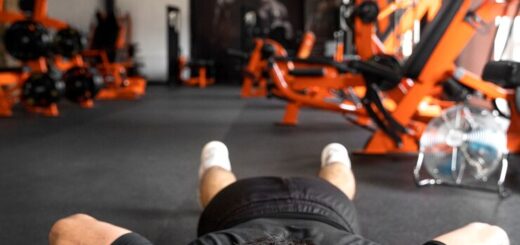What is Deadlift Program?

- Applications of Deadlift Program
- Benefits of Deadlift Program
- Challenges of Deadlift Program
- Tips for Deadlift Program Success
- Conclusion
What is Deadlift Program?
The Ultimate Guide to Deadlift Program: Unleashing the Power of This Must-Try Workout
Are you looking for a workout routine that can transform your body and improve your overall fitness? Look no further than the deadlift program. This powerful exercise has gained popularity in recent years for its ability to build strength, increase muscle mass, and improve athletic performance. In this comprehensive guide, we will delve into everything you need to know about the deadlift program – from its definition and applications to its benefits and challenges. So, get ready to lift heavy and reap the rewards of this must-try workout.
What is Deadlift Program?
The deadlift program is a weightlifting exercise that involves lifting a barbell or dumbbell from the ground to hip level while keeping your back straight. It primarily targets the muscles in your lower body, including the glutes, hamstrings, quads, and calves, but also engages your core and upper body muscles. It is considered one of the most effective compound exercises as it works multiple muscle groups at once.
Applications of Deadlift Program
Deadlifts are not just for bodybuilders or powerlifters – they can benefit anyone looking to improve their overall fitness. Here are some common applications of deadlift program:
1. Strength Training: Deadlifts are an excellent way to build strength as they engage large muscle groups and require you to lift heavy weights.
2. Muscle Building: As a compound exercise, deadlifts stimulate muscle growth in various parts of your body, making it an ideal choice for those looking to gain muscle mass.
3. Athletic Performance: Many athletes incorporate deadlifts into their training regimen as they can improve speed, power, and explosiveness.
4. Injury Prevention: Stronger muscles mean better stability and reduced risk of injury during other physical activities.
Benefits of Deadlift Program
1. Builds Total Body Strength: The deadlift program targets almost every muscle in your body, making it a great full-body workout.
2. Increases Muscle Mass: By engaging multiple muscle groups, deadlifts promote muscle growth and can help you achieve a more defined and toned physique.
3. Improves Posture: Deadlifts require you to maintain a neutral spine and engage your core, which can help improve your posture and prevent back pain.
4. Boosts Athletic Performance: The explosive movement of deadlifts can enhance your speed, power, and agility, making you a better athlete.
5. Burns Fat: As a compound exercise that engages multiple muscles at once, deadlifts burn more calories than isolation exercises, aiding in fat loss.
Challenges of Deadlift Program
1. Risk of Injury: Deadlifts are an advanced exercise that requires proper form and technique to avoid injury. It is crucial to start with lighter weights and seek guidance from a professional trainer if needed.
2. Requires Proper Equipment: To perform deadlifts safely and effectively, you need access to equipment like barbells or dumbbells and weight plates. This may not be feasible for everyone, especially for those working out at home.
3. Can be Intimidating: Lifting heavy weights can be intimidating for beginners or those unfamiliar with strength training. It is essential to start slow and gradually increase the weight as you build strength and confidence.
Tips for Deadlift Program Success
1. Warm-up Before Lifting: Before starting your deadlift program, it is crucial to warm-up your muscles with dynamic stretches or light cardio to prevent injury.
2. Focus on Form: Proper form is key when performing deadlifts to avoid injury and maximize results. Keep your back straight, engage your core, and lift with your legs rather than your back.
3. Start Light: If you are new to deadlifts, start with lighter weights until you have mastered the proper form and technique.
4. Increase Weight Gradually: As you become more comfortable with deadlifts, gradually increase the weight to challenge your muscles and continue seeing progress.
5. Take Rest Days: It is essential to allow your muscles time to recover between deadlift sessions. Taking rest days can help prevent injury and improve performance.
Conclusion
The deadlift program is a versatile and effective workout that offers numerous benefits for anyone looking to improve their strength, muscle mass, and athletic performance. However, it is crucial to approach this exercise with caution and seek guidance from a professional trainer if needed. Remember to start slow, focus on proper form, and gradually increase the weight as you build strength. So, are you ready to unleash the power of deadlifts? Give it a try and experience the transformative effects of this must-try workout.



